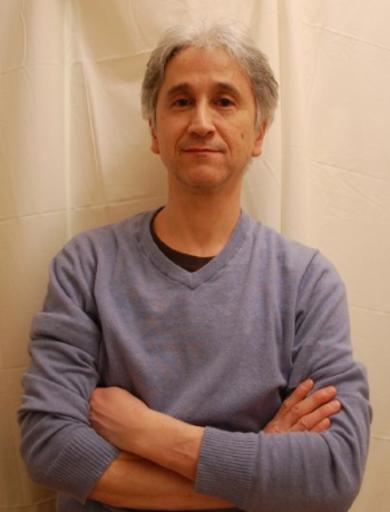
Dr. Donato Totaro, PhD
- Part-time Faculty (Film Studies), Cinema
Are you the profile owner?
Sign in to editResearch areas: Film Criticism, horror genre, Andrei Tarkovsky, cinema and temporality, film style
Contact information
Email:
Website:
Biography
Donato Totaro received his PhD in Film & Television from the University of Warwick(UK), supervised by the late Victor F. Perkins, and has been a Film Studies lecturer at Concordia University (Montreal, Canada) since 1990. Totaro has been the editor of the longest running monthly online film journal, Offscreen, since its inception in 1997, and member of AQCC "Association québécoise des critiques de cinéma" since 2004.
Education
PhD (University of Warwick)
Research interests
Horror genre, film style, cinema and temporality, film criticism.
Areas of expertise
Andrei Tarkovsky, horror genre, film style

Teaching activities
Courses taught
Lecture courses taught include "Introduction to Film and Moving Image Studies", "Film Comedy," "Film Aesthetics," "Film Analysis," "Montage Aesthetics," "History of Film to 1959," "Horror and Fantasy," "The Good, the Bad, and the Ugly: Italian Popular Genres" and "Moving Camera Aesthetics." Seminars taught include "The Art and Practice of Film Criticism," "Discourses on the Horror Genre," and "Time, Temporality and Cinema," "Seminar Crit. Media Practices: Video Essays"
Teaching Awards
- 2018: The Oksana and John Locke Award: The First 100 Years of Cinema, April 26, 2018
- 2017: The Faculty of Fine Arts Distinguished Teaching Award, Recipient, April 28, 2017
- 2015: The Faculty of Fine Arts Distinguished Teaching Award, Nominee
- 1993-2017: CUPFA Professional Development Grant: 1993, 2000, 2004, 2006, 2016
- 2014: The Faculty of Fine Arts DistinguishedTeaching Award, Nominated
- 2005: Winner of “Outstanding Achievement in Film Studies,” Part-Time Teaching Award
Research activities
Film Criticism
Study and application of a new tool in film criticism, the audio visual essay
The Face at the Window
My research is a long running study of how the iconic image of a face appearing at a window has functioned as a multifaceted signifier for the development of theoretical discourses around the horror genre (monster/victim, inside/outside, looker/looked at, passive gaze/active gaze, sympathetic/non-sympathetic, seen/unseen, on-screen/off-screen, etc.).
Women in Horror
Research on the recent (post-2010) surge in women working in and around the horror film genre, including festival programming, filmmaking, film criticism, teaching, podcasting, publishing, online and social media platforms.
The Impact of the ‘Monster Kid’ Generation on Movie Culture
Film fans who grew up on a steady diet of classic and not so classic horror films from the 1950s to the 1970s are often referred to the “monster kids”. The start date for this generation in terms of cultural inroad is 1957 and 1958. The year 1957 is when Universal studios released a “Shock!” package of older 52 Universal Horror films to television, which gave children who were too young to watch these films theatrically their first glimpse into a hidden and somewhat taboo world of monsters, villains and shadowy worlds. The next important event for the ‘monster kids’ was 1958, when publisher James Warren, with Forest J Ackerman at the helm as editor, launched the first ever horror magazine, Famous Monsters of Filmland. The monster kid generation led to a cultural flowering of popular culture artifacts that included all types of collectibles and multi-media iterations. Many of the 'monster kids' went on to shape the future of modern horror and science fiction: George Lucas, Joe Dante, John Landis, Steven Spielberg, Guillermo Del Toro, John Carpenter and Quentin Tarantino. As important for the culture of horror was the labour and artistic sphere broader than just filmmaking. For example, artists, painters, musicians, comic book writers, sculptors, make-up and special effects artists, programmers, book and magazine publishers, fanzine publishers, critics, collectors, cultural theorists and academics. On the surface this is a sweeping task, but the scope will become clearer as I begin to assess the prominence of people who were influenced by the popular culture artifacts to try and assess their overall impact on movie (and more specifically horror) culture.
Research, Academic and Professional Awards
-1987-1989: Fonds pour la Formation de Chercheurs et L'Aide à la Recherche (Quebec)
-1988-89: Research Grant, Faculty of Graduate Studies, York University

Example of an iconic faces at the window image, from Black Sabbath, 1963
Publications
Andrei Tarkovsky
“Temporality and the Long Take in Stalker.” ReFocus:The Films of Andrei Tarkovsky. Sergei Toymentsev, ed., Edinburgh University Press,
“Art For All ‘Time’: Andrei Tarkovsky’s Sculpting in Time,” Film-Philosophy,February 2000, vol. 4 no. 4, [journal on-line]; available from http://www.film-philosophy.com/vol4-2000/n4totaro
The Films of Andrei Tarkovsky, by Graham Petrie & Vida T. Johnson, “Book Review Essay,” Canadian Journal of Film Studies/Revue canadienne d'études cinématographiques,Vol.4 No. 2 (Fall 1995): 51-59
“Time and the Film Aesthetics of Andrei Tarkovsky,” Canadian Journal of Film Studies/Revuecanadienne d’études cinématographiques Volume2, No. 1 (Spring, 1992): 21-30
Plus many essays on Tarkovsky published on Offscreen.
Interview subject about Tarkovsky on Cosmoetica, #89:
Horror publications
“Fantasia Turns 20: The Return of the Retro Aesthetic.” August 2017. Cine-Excess Special Issue: Mark of the Devil
“A.I.: Artificial Intelligence (Steven Spielberg, 2001) as Intertexual, Reflexive Monster.” Ed.Adam Zanzie. The Take2 Guide: Steven Spielberg. New York: Digiaction, Take 2 Publishing,pp. 366-372.
“Jose Mojica Marins,” & “South American Horror.” Historical Dictionary of South American Films. Ed. Peter Rist (Scarecrow Press, 2014).
“Masters of Horror” in Cult TV.Ed. Stacey Abbott, I.B. Tauris Publishing, 2010, p. 87-90.
“I Vampiri” and “The Bloody Pit of Horror” in 100 European Horror Films ed. Steven Jay Schneider. London: BFI (British Film Institute), 2007, p. 29-30, 117-119. “The Italian Zombie Film:From Derivation to Reinvention,” in Fear Without Frontiers,ed. Steven Jay Schneider, 161-173.
Essays on "City of the Living Dead,” “The Beyond,” “The House by the Cemetery,” “Demons,” “Demons 2,” and“Dellamorte, Dellamore” in Eaten Alive!: Italian Cannibal andZombie Movies, ed., Jason Slater, 128-131, 165-169, 173-176,193-199, 231-235
Dozens of essays on the horror genre in Offscreen.
Film Criticism
“Schrader’s Canon.” Cinema Study for Youngsters. Hilario J. Rodríguez, editor. (forthcoming 2025)
Contextual Analysis of An Occurrence at Owl Creek Bridge: Robert Enrico vs. Rod Serling”. Short Story Criticism Volume 348: An Occurrence at Owl Creek Bridge by Ambrose Bierce. Layman Poupard Publishing,2024, 39-43.
"Apocalyptic Westerns." Weird Westerns. Jesús Palacios, ed. and translator, Applehead Team Creaciones, 2021, p.399-409
“Paraguayan Hammock,” “Jose Mojica Marins,”& “South American Horror.” Historical Dictionary of South American Films. Ed.Peter Rist. Rowman & Littlefield, 2014, 305-306, 323-328, 389-392.
“Statistical Analysis: Reflections on the Pickpocket Statistical Analysis.” Twentieth Century Literary Criticism. Vol. 287. Ed. Maryann De Julio. Farmington Hills, MI: Gale, Cengage Learning, 2014.Print. pp. 203-205.
The Skin of the Film: Intercultural Cinema,Embodiment, and the Senses, by Laura Marks, Book Review. Canadian Journal ofFilm Studies/Revue canadienne d’études cinématographiques Volume 10 No. 1(Spring 2001): 106-109.
“Seoul Stirring Again: Korean Cinema's 2ndNew Wave,” Kyoto Journal No.46 (Winter 2001): 90-93.
“Reflexivityin Recent Iranian Cinema: The Case of Mohsen Makhmalbaf,” Asian Cinema , Vol.11 No.2 2 (Fall/Winter 2000):32-46


